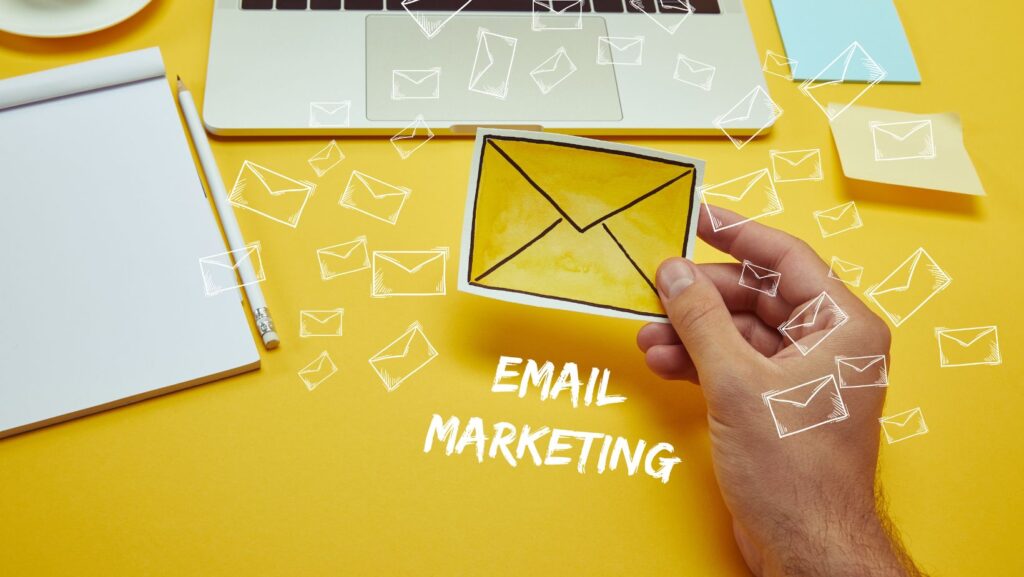
Email marketing has evolved from generalized email blasts to segmented emails to today, where hyper-personalization is key. Where consumers once accepted generic mass emails, they now demand digital communication that better reflects their interests. Hyper-personalization describes email content created by machine learning, AI, and real-time analytics, meaning brands can get more intimate.
When brands have not only daily access to someone’s actions but also previous purchases and predictive analytics for future suggestions, the email marketing arena can surpass the effort to simply personalize a message with a first name. However, with intent clarity, interest, activities, and web engagement, brands can offer the precise email content that more reflects what people believe about themselves, thus increasing open rates and conversion.
How Hyper-Personalization Goes Beyond Traditional Personalization
When people hear personalized email marketing, they think of a first name in the subject line or a salutation in the email’s body. But while this once went a long way with consumers, it doesn’t cut it anymore. What people want now is hyper-personalization from relevant, AI-driven data insights.
For example, a clothing store can send an email with not just the customer’s name but also similar options to a recent purchase, shopping cart activity, and sizes indicated in their profile. A hotel chain can suggest people take vacations to places where they’ve previously stayed but with suggested amenities based upon their past loyalties. Since companies can follow data trends in real-time, they can send emails that work at any given time, so every email matters to the consumer and makes sense. However, even highly personalized messages won’t be effective if they fail to reach the inbox SMTP error 554.500 can prevent delivery due to reputation issues or policy blocks, making it essential to monitor and improve email infrastructure.
Leveraging AI and Machine Learning for Smarter Email Targeting
AI and machine learning champion hyper-personalization when it comes to email marketing. Brands can access customer data and customer behaviors and, through real-time analytic tools, predict what type of information will best serve each subscriber. Furthermore, AI can dynamically segment audiences through behavioral triggers, ensuring that a user has access to an email campaign based on their actions and interests.
For example, if someone opens every email about sneakers and makes purchases in that category but ignores emails about headphones and fails to purchase when those purchases are made, AI may recommend this subscriber receive workout clothing and gear in the future, but never anything associated with electronics. The opposite is true, too; if someone opens an email every day at 3 PM, AI acknowledges this as their prompt and sends subsequent emails around that time. Thus, with machine learning, brands can adjust their findings accordingly over time. The more AI learns, the more successful and powerful email marketing campaigns can be.
The Role of Real-Time Behavioral Data in Hyper-Personalization
Because hyper-personalization demands instantaneous triggering based upon customer behavior, the projected appeal is far more effective than waiting to receive feedback from a customer and then creating and sending an email to follow up. Where standard email marketing relies upon static customer profiles and customer journeys, hyper-personalization changes based upon customer interaction with the content.
For instance, if someone leaves a cart full of items to purchase but does not follow through, an email automatically generated to recapture their interest can be infused with a gentle nudge and a coupon to encourage completing the transaction. If someone subscribes to a newsletter for a particular item and opens the email but does not purchase, a projected follow-up email interpreted by AI can be sent with more information, reviews, or other like suggestions. Companies can be sure that every email sent makes sense upon sending and brings the company one step closer to conversion with real-time analysis of behavioral data.
Creating Dynamic Email Content That Adapts to Each User
Hyper-personalization also creates dynamic email content that changes relative to the recipient. Where a typical email blast sent to all subscribers would feature the same images, links, and calls to action, an AI-generated email can change the images included, the products suggested, and the CTAs reliant on past user information.
For example, a clothing company could send a clearance email where the images changed to reflect what each user purchased in the past and their color choices based on prior activity. A movie streaming service could push certain series or films in the email based on what a user has watched in the past. The recommendations relate. But where products and services are generally constant from one email to the next, it renders each email more personalized as if it were created strictly for that user, which increases engagement.
Hyper-Personalized Email Sequences for Customer Nurturing
Not every customer journey is linear. That’s why hyper-personalized email drips help convert leads or keep existing customers and make sure the message is sent at the right part of the buying cycle. Thus, AI can be used to trigger a whole slew of emails based on what someone is doing or not doing to ensure the proper communication is sent at the time people most need to hear it. A SaaS company, for example, can create an onboarding email drip that is triggered by usage within the software. If a customer finishes one of their videos, the next email can teach them about more advanced functions. If they avoid engaging altogether, the second email can give them additional resources for guidance.
A clothing retail store can create a subscription re-engagement email drip that is triggered based on how long someone has been a subscriber without making a purchase. If someone is a subscriber and bought a winter coat three months ago, they might receive a winter maintenance email” How’s your new coat working out?” that encourages engagement.
The Impact of Hyper-Personalization on Email Engagement and ROI
The appeal of hyper-personalization is shown in email statistics. For example, personalized emails have higher open rates, higher click-through rates, and higher conversion rates compared to non-personalized campaigns. When companies communicate with consumers at the right time with the right resources, the brand has the opportunity to strengthen the relationship and, simultaneously, drive revenue.
For the brand, hyper-personalization improves return on investment (ROI). Brands that merely blast emails with an initial campaign are attempting to gain interest but simultaneously wasting resources; those efforts will not garner a positive ROI from such efforts. However, sending highly-targeted emails will render measurable results; when something applies, people engage much more likely and spend money when what they see is for them. An applicable email inspires activity, whether it’s a buy, a sign-up, or any other opportunity to engage.
Brands looking to successfully integrate hyper-personalization will not only find email marketing success from their efforts but also enhanced customer nurturing and brand loyalty.
Overcoming Challenges in Implementing Hyper-Personalized Emails
However, there are problems with hyper-personalization that companies must resolve. For example, data privacy is a concern. Many consumers know why companies collect such data, which means that any company that relies on hyper-personalization through AI must stay compliant with data collection and usage laws, including GDPR and CCPA.
In addition, the need for managed endeavors requires a project at a higher level. Personalization through AI relies on technology from day one; a clear data strategy is involved. Companies will need to invest in AI-driven email marketing platforms that can sufficiently process data and information to enable real-time personalization without overwhelming marketing teams.
Finally, while automation expedites the process, a human element is still required. Over-relying on AI can create miscommunication people might receive emails that seem canned or are too robotic. Therefore, hyper-personalization must be executed with a careful understanding of brand voice to get it right.
The Future of Hyper-Personalization in Email Marketing
Hyper personalization in email marketing will only become more advanced over time. The future can include AI-driven sentiment analysis combined with predictive behavioral tendencies and in-the-moment contextual triggers transformed into even more niche messaging. For example, AI could assess whether a customer was happy or angry in previous emails and adjust future communications based on the tone or mood involved in prior attempts, creating correspondence in naturally satisfying ways.
In addition, hyper-personalization won’t only occur over email. It can become an omnichannel integration and effort to create a wholly seamless and personalized experience across web, mobile, and social platforms. One day, people will be able to hear their personalized emails via voice search or have items recommended to them based on verbal feedback they gave their voice-activated at-home device last Friday. The level of email hyper-personalization will become so intimate and engaging that every email will be expected before it even is sent—and appreciated once it arrives.
Conclusion
Hyper-personalization will render email marketing an increasingly relevant, data-driven experience. AI implementation allows brands to understand behavior in real time and create content opportunities on the spot that no longer render a one-size-fits-all experience.
Instead, with a transition to hyper-personalization and a growing expectation of such personalization from consumers, those using email marketing to its hyper-personalized potential will be ahead of their time. Any use of predictive user experience needs, reflexive and real-time reactions to gestures and actions, and tailored messaging to the unique subscriber makes each email sent that much more interactive and devoted to loyalty. Thus, those who can transform via hyper-personalization will reign supreme in the future of email marketing.









